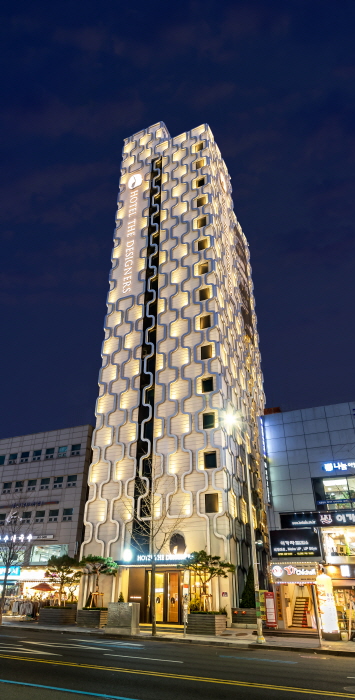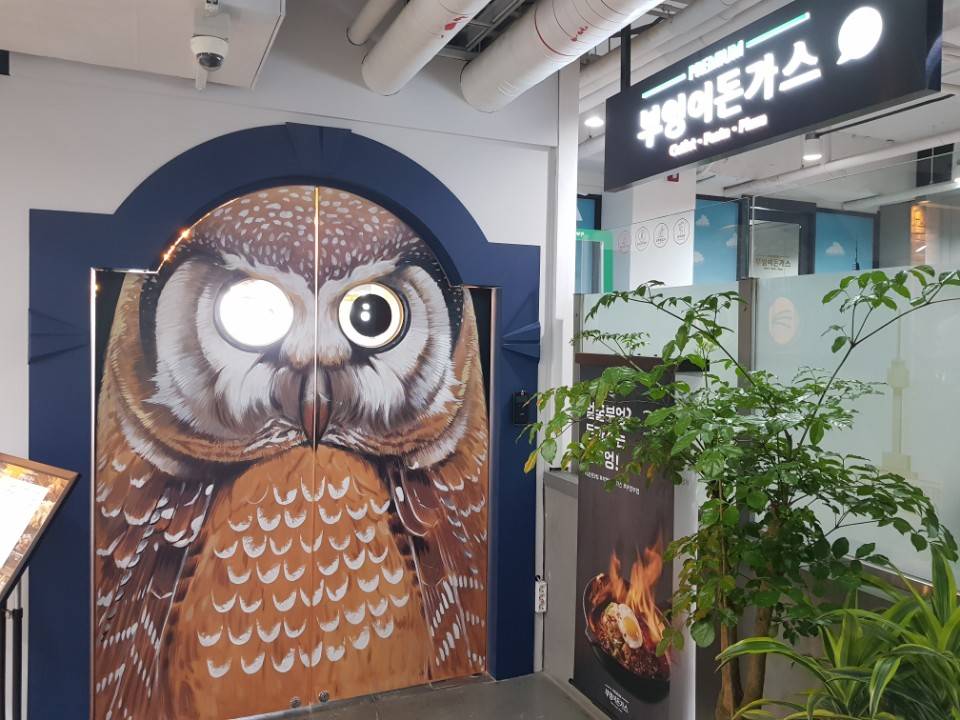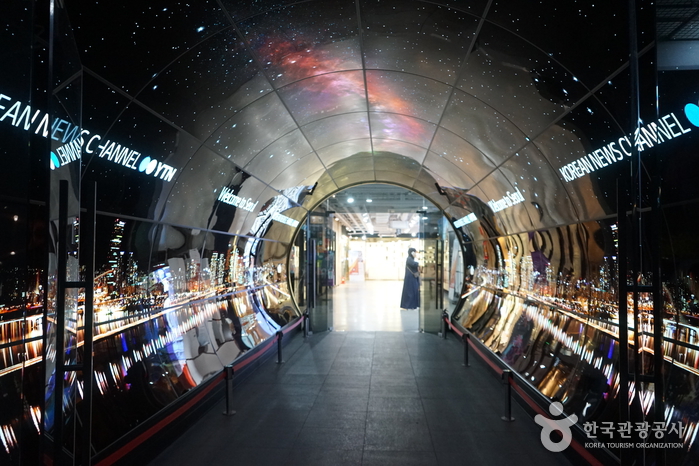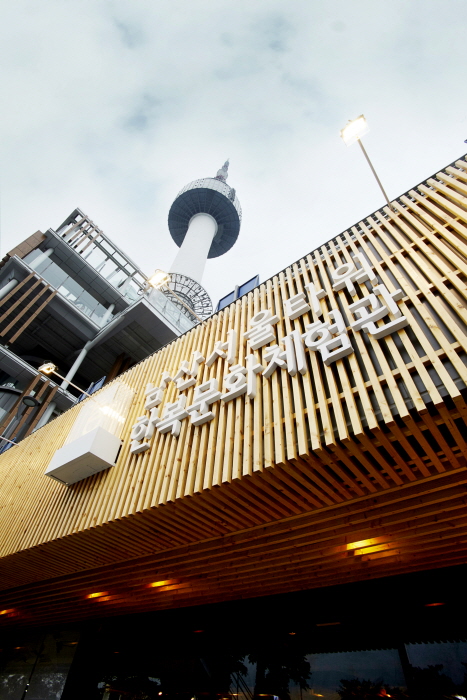Hotel The Designers - Cheongnyangni Branch (호텔 더 디자이너스 청량리)
3.2Km 2023-05-02
226, Wangsan-ro, Dongdaemun-gu, Seoul
+82-2-957-3300
Hotel The Designers, Cheongnyangni Branch is located four minutes from Cheongnyangni Station Exits 1 and 4 and two minutes by foot from Lotte Department Store. Visitors can take the KTX at Cheongnyangni Station to Gangneung and Yangpyeong or the ITX-Chungchun to Gapyeong, Nami Island in Chuncheon, and Yangpyeong Sheep Farm. Dongdaemun Market is only seven minutes away on Seoul Subway Line 1 and Incheon International Airport can be reached in one hour by car. The front desk is open 24 hours and free Wi-Fi is available throughout the accommodation. Parking is free and there are also valet services provided. Smoking is prohibited indoors. Each room is equipped with LED cable TV, refrigerators, free water, and an electric kettle. The bathrooms have bathtubs, shower facilities, and a bidet.
N Seoul Tower (남산서울타워)
3.2Km 2025-08-07
105 Namsangongwon-gil, Yongsan-gu, Seoul
+82-2-3455-9277
Namsan Seoul Tower was the first multipurpose tower to be established in Korea, effectively incorporating a sightseeing observatory into a broadcasting tower. For the past 40 years, Namsan Seoul Tower has served as an iconic landmark of Korea and a representative tourist attraction. The tower's observatory offers an unobstructed view of the whole city, allowing it to become one of the all-time favorite attractions of Seoul citizens as well as domestic and international tourists. Featured in many dramas and reality shows, it is also a fan-favorite destination. Another highlight of the tower is the Namsan Cable Car. The cable car began its operation in 1962, transferring passengers from the foot of the mountain to the base of the tower. Shuttle buses to the Namsan Cable Car from downtown Seoul are also available for visitors' convenience.
◎ Travel information to meet Hallyu’s charm
In TXT’s content “TALK X TODAY,” the youngest members, Huening Kai and Taehyun, enjoyed a day out in their school uniforms. They rode the cable car to the top, took pictures together, and secured their wish lock. You can purchase locks at the souvenir shop near the cable car station at the top of the mountain, where name pens are also available to write down your wishes.
Seoureseo Duljjaero Jalhaneunjip (서울서둘째로잘하는집)
3.2Km 2024-03-15
122-1 Samcheong-ro, Jongno-gu, Seoul
+82-2-734-5302
Seoureseo Duljjaero Jalhaneunjip is a sweet red bean porridge and traditional tea house near Gyeongbokgung Palace. Sweet red bean porridge is a sweet and smooth dish typically containing chewy rice cakes and chestnuts. In Korea, it's a traditional food eaten during dongji (the shortest day and longest night of the year). They also offer traditional teas like ssanghwatang (herbal tonic tea), which contains seven medicinal herbs, sujeonggwa (cinnamon punch) with a blend of cinnamon and ginger flavors, and sikhye (sweet rice punch), a drink known for aiding digestion.
HANCOOK N Seoul Tower (한쿡 N서울타워)
3.2Km 2024-03-15
(Tower 3F), 105, Namsangongwon-gil, Yongsan-gu, Seoul
+82-2-3455-9292
HANCOOK is a Korean restaurant located within the N Seoul Tower, from which one can see the entirety of Seoul. The restaurant presents the traditional flavors and food culture of Korea through its Lunch and Dinner Special Courses, as well as nearly 30 a la carte menu. The latter includes Bulgogi bibimbab bansang (Grilled bulgogi bibimbap) and chamsut hanu gui bansang (charcoal-grilled Korean beef & cold buckwheat noodles).
THE PLACE Dining(더플레이스다이닝)
3.2Km 2024-03-08
ソウル特別市ヨンサン区ナムサンゴンウォンギル105
+82-2-3455-9220
THE PLACE Dining(ザ・プレイス・ダイニング)はNソウルタワーにあるイタリアンレストランです。窓の外が見えるカップル専用席でピザやパスタなどをワインと一緒に楽しめます。ルーフトップガーデンテラスと空中遊歩道からはタワー一帯のソウル市街が見下ろせます。シグネチャーメニューは予約必須のスペシャルコースとポーターハウスです。予約は電話でのみ受け付けています。
n.GRILL (엔그릴)
3.2Km 2024-03-08
(7F, N Seoul Tower), 105, Namsangongwon-gil, Yongsan-gu, Seoul
+82-2-3455-9297
n.GRILL is a French restaurant located on the seventh floor, the highest floor in the N Seoul Tower. The restaurant rotates 360 degrees, so one can enjoy the food with the view of Seoul. n.GRILL is particularly famous as a place for marriage proposals, thanks to its beautiful view of Seoul at night. It is a perfect place for those who want special spaces and events.
Owl's Cutlet Premium Namsan Seoul Tower(부엉이돈가스 남산서울타워)
3.2Km 2021-04-15
105, Namsangongwon-gil, Yongsan-gu, Seoul
+82-2-318-0518
This is a Japanese cuisine located in Namsan Seoul Tower, Seoul. A restaurant serving cast iron-grilled pork cutlets. The best menu at this restaurant is pork cutlet.
Rex Hotel (렉스호텔)
3.2Km 2021-03-03
23, Toegye-ro 10-gil, Jung-gu, Seoul
+82-2-751-3191
Lex Hotel is a suitable accommodation for business trips. It is also great for shopping, due to its convenient location by Namdaemun Market, Seoul Station, and Myeong-dong, as well as Korea's major shopping malls like Lotte and Shinsegae Department Stores. The hotel has 110 rooms, offering a view of downtown Seoul. It is also equipped with convenient amenities and restaurants that are ready to fulfill every guest’s needs. The guestrooms feature a comfortable atmosphere with a simple interior.
Seoul Tower Plaza (서울타워 플라자)
3.2Km 2016-08-18
105, Namsangongwon-gil, Yongsan-gu, Seoul
N Seoul Tower used to be the tower for broadcasting transmission and the bottom levels of the tower have restricted access to authorized staff only. Since the remodeling to the Seoul Tower Plaza in 2015, these levels are now opened the public. Visitors to the Seoul Tower Plaza building can also enjoy the terrace that is installed to serve as a walking trail for leisure walks. A beautiful panoramic view of Seoul can also be seen from 243m in x_height. at the summit of Namsan Mountain.
Namsan Seoul Tower Hanbok Culture Experience Center (남산서울타워 한복문화체험관)
3.2Km 2021-03-16
105, Namsangongwon-gil, Yongsan-gu, Seoul
Namsan Seoul Tower Hanbok Culture Experience Center is located in the lobby level (B1) of Seoul's landmark Namsan Seoul Tower. The center is designed around the theme of the Joseon dynasty, and features both large photo zones and hanbok of various styles, ranging from traditional to modern and even wedding.







 English
English
 한국어
한국어 日本語
日本語 中文(简体)
中文(简体) Deutsch
Deutsch Français
Français Español
Español Русский
Русский